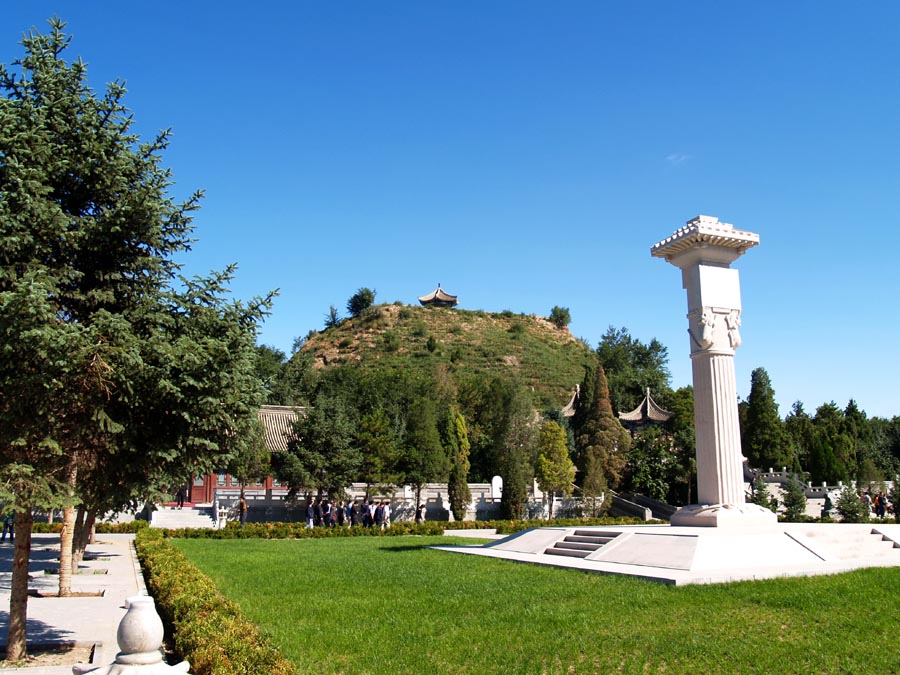|

Zhaojun Tomb is about 9 kilometers from the southern suburbs of Hohhot. It was built to memorialize the concubine Wang Zhaojun (Wang Qiang) of the Western Han Dynasty (206 B.C.-24 A.D.).
In 33 B.C. Wang Zhaojun was a concubine to Emperor Yuandi at a time of hostility between the Hans and the Mongolians. She volunteered to serve as an ambassador for peace, leaving the imperial court in Chengdu for the frontier areas to marry the Mongolian Chanyu, chieftain of the Xiongnu tribe in ancient China. It is claimed that the chieftain was so enamored of her that peace between the two states was maintained for the next 60 years.
The Zhaojun Tomb, a key protected of the Inner Mongolia Autonomous Region, is now considered a symbol of China's national unity.
Shaped like an overturned cape, the tomb was built with earth. It is 33 meters high, covering an area of 13,000 sq meters. The cemetery centers on the grave. There is a path, decorated archway, stone carving and bronze statue in front of the grave. A 4-metre-high large bronze statue weighing 5 tons shows Chanyu and Wang Zhaojun riding side by side on horseback. There's a 100-meter stele corridor, in which a great number of inscriptions related to Zhaojun Tomb since the Qing Dynasty (1644-1911) are displayed.
The landscape surrounding the tomb is very beautiful and is always changing, and it has been called a "green tomb supporting beauty."
|
